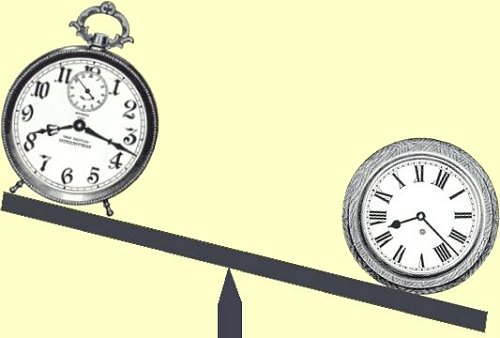Right Now
Today, we look for Right Now. The University of Houston's College of Engineering presents this series about the machines that make our civilization run, and the people whose ingenuity created them.
I grow increasingly put off by the common advice that we should live in the present. Actually, that's quite impossible to do. If you can tell me when Right Now occurs, then I'll try it.
Let me offer an example here in my office. I soak up sensory input -- objects, tasks pending, books already read and papers long since written, and, on the wall, my photo of the Iguazu waterfall. That day when I made the surrealistic mile-long trek along its rim in Brazil comes back, as does the hope of one-day seeing it again.
But where, in the process of looking at the photo, is the pre-sent? As long as I stare, unblinking, I seem to own a present mo-ment. Then I find my eyes moving about the picture, imagining the motion of the water, the changing perspective of that day in Brazil. Even so calm a thing as seeing a cherished photo turns into a process with its thens and will-be's. You may've heard me quote Isaac Watt's eighteenth-century hymn about the directionality of time,
Time, what an empty vapor 'tis;
and days how swift they are.
Swift as an Indian arrow flies;
or like a shooting star.
He knew time doesn't sit still. And his second verse drives that point home. He says,
The present Moments just appear,
Then slide away in haste,
That we can never say, "They're here;"
But only say, "They're past."
Watts knew, long ago, what early twentieth century physics would tell us in more formal terms. After we sorted out quantum mechanics, we not only knew that no single instant in time could ever be experienced. We found that it couldn't even be specified.
By then, Einstein had shown that it's also nonsense to speak of simultaneity between any two things that aren't sitting still. What does simultaneity mean between two moving clocks, each of which sees the other through relativistic distortions?
Along with Einstein, arose Proust, Joyce, and Duchamp. A Proust character might relive a vast portion of his life within a single instant. Yet, anyone reading Proust is quite aware of time passing, as the instant stretches out over pages. Joyce's narratives and Duchamp's paintings undercut the human experience of time-as-sequence, by displaying action kaleidoscopically.
I won't shrug off the canard about living in the present; but what it really means is that I need to connect my past to my intentions -- recreating from the best of what has been in a future that is my responsibility. It means I cannot leave my past in some nos-talgic box where it doesn't touch my future.
The most amazing twentieth-century discovery was the folly of our tidy notions about time. So I do my best to live within to-day's process -- devoid as it is of any present moment. But then, the game never was about moments; it's always been about movement.
I'm John Lienhard, at the University of Houston, where we're interested in the way inventive minds work.
(Theme music)
Here's a nice treatment of relativity and simultaneity: http://plato.stanford.edu/entries/spacetime-convensimul/
I am very grateful to Sarah Fishman, UH History Dept., and George Reiter, UH Physics Dept., for their counsel.
A good example of Proust's writing and his handling of time is: M. Proust, Swann's Way (Remembrance of Things Past, No. 1). New York: Penguin, 1998.
Listener Larry Friesen writes to point out that my phrase, "nonesense to speak of simultaneity" is hyperbole. It would've been more accurate to've said, perhaps, that simultaneity is dependent upon the reference frame of the observer.
